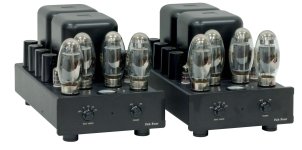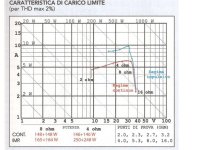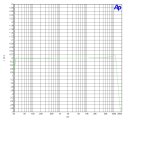Indeed if both halves are nicely matched (expensive) but separate cathode resistors work better with unmatched halves (cheaper)... It avoids current hogging, too. But you know that 🙂
Besides, the extra resistors cost a whopping 4 cents 🤣
I believe those resistors to be an insignificant source of THD when compared to the capacitors and transformers.
Shame you're so far away - I'd love you to hear one of these amps!
Besides, the extra resistors cost a whopping 4 cents 🤣
I believe those resistors to be an insignificant source of THD when compared to the capacitors and transformers.
Shame you're so far away - I'd love you to hear one of these amps!
THD surely is not about the resistors, but a matter of signal imbalance in this case. I'm not that inclined to audiophoolish snake oil 😉.
I guess, first and foremost you want equal, but out of phase signals at the finals' grids. This can be easily acheived by a CCS between both paralleled cathodes and, please note, your negative bias supply voltage, equal plate resistances, and grounded grid leaks. Equal plate standing currents for both triodes is not that important. For sure the expence of an arrangement like this will exceed four ct by far 😀.
Best regards!
I guess, first and foremost you want equal, but out of phase signals at the finals' grids. This can be easily acheived by a CCS between both paralleled cathodes and, please note, your negative bias supply voltage, equal plate resistances, and grounded grid leaks. Equal plate standing currents for both triodes is not that important. For sure the expence of an arrangement like this will exceed four ct by far 😀.
Best regards!
(...)
The configuration is pentode even I tested it also in triode mode.
(...)
Walter
Mmm, sorry for the long delay for replying.
Did you try ultralinear as well?
I never tried a pentode amplifier... is it superior to ultralinear that is the question...
I sort of quit diy and just returned due to lack of time, other problems in my life creeping up, failures, but I will not fail in the diy! anyways another good reason for the procrastination is that I already built my dream el34 amplifier which is quite good, It could benefit from updated transformers... I know the design is just very advanced and very good, but I want to build my own amplifier with my own unique design...
I sort of quit diy and just returned due to lack of time, other problems in my life creeping up, failures, but I will not fail in the diy! anyways another good reason for the procrastination is that I already built my dream el34 amplifier which is quite good, It could benefit from updated transformers... I know the design is just very advanced and very good, but I want to build my own amplifier with my own unique design...
I prefer pentode/tetrode config because it need more attention to set the best config
The efficiency is good
I made one stereo with KT120 with good power and sound due the right OT that must be well built ( = costs)
Walter
The efficiency is good
I made one stereo with KT120 with good power and sound due the right OT that must be well built ( = costs)
Walter
Ok Walter, thanks for the contribution.
I am aware of the criticism of the UL designs. For me the cost of time and material to try cathode feedback with Pentode is great due to my poor skills and limitations in knowledge. So the amplifier will be ultralinear kt120, possibly with transformer coupling drivers and global feedback.
I know many are trying to find the holly grail of detail, texture, romantic and impactful and emotional sound. In my perspective the UL can strike this balance and get you full satisfaction. I am not sure exactly why it worked and what contributed to this. I had already an excellent ppkt120 mono with hammond 100W operating with LTP drivers. I think keeping the driver tube quality, a powerful choked power supply and the pure anode taken signal played a role. Softone RX-80 output transformers made a night and day difference.
Does anyone know if there are any sound benefits of using a transformer to drive kt120?
I am aware of the criticism of the UL designs. For me the cost of time and material to try cathode feedback with Pentode is great due to my poor skills and limitations in knowledge. So the amplifier will be ultralinear kt120, possibly with transformer coupling drivers and global feedback.
I know many are trying to find the holly grail of detail, texture, romantic and impactful and emotional sound. In my perspective the UL can strike this balance and get you full satisfaction. I am not sure exactly why it worked and what contributed to this. I had already an excellent ppkt120 mono with hammond 100W operating with LTP drivers. I think keeping the driver tube quality, a powerful choked power supply and the pure anode taken signal played a role. Softone RX-80 output transformers made a night and day difference.
Does anyone know if there are any sound benefits of using a transformer to drive kt120?
Genrally speaking, transformer coupling with global feedback will greatly complicate your life. ;-) The frequency limits of an IT can be fatal to stabilizing a feedback amp. And there's really no need with beam power tubes. They don't need a huge amount of voltage or current drive to sound good. For PP 300Bs they make sense but here I think it's a waste of time and money.
The proble is that this interstage trafo must be with the same quality of the OT trafo.Does anyone know if there are any sound benefits of using a transformer to drive kt120?
So the costs are not cheap; if you look to Sowter or Lundhal you can see the prices.
And you have take the maximum care on max swing on primary and secondary .
Then check the response in frequency to understand if there are resonances in the high audio band and if there is enough inductance in the low end.
Not easy
Walter
Thanks Walter, I saw in some schematics they place capacitors between the opposite phase windings... do you know?
If I remember the advantage is in 'sinking' grid current, especially with kt120 the gnd-grid resistance is specified very low because this tube has the ability to generate a lot of grid current in grid bias, 50 k resistance max is specified. If I bias through the transformer with regulated supply this could be an advantage.
If I remember the advantage is in 'sinking' grid current, especially with kt120 the gnd-grid resistance is specified very low because this tube has the ability to generate a lot of grid current in grid bias, 50 k resistance max is specified. If I bias through the transformer with regulated supply this could be an advantage.
Last edited:
Food for thoughts: schematic link: (( this is a triode not ultralinear but so.. )) schematic from Japanese builder
Ciao Walter!I prefer pentode/tetrode config because it need more attention to set the best config
The efficiency is good
I made one stereo with KT120 with good power and sound due the right OT that must be well built ( = costs)
Walter
With same setup, what is your personal opinion about differences between kt120 and kt88 in UL PP?
@gabdx it seems (but maybe i'm wrong) the only tube you did not mention is eventually adapt to drive kt120.... the 6SL7, higher mu , gain and swing than the 6sn7. I see a lot of 6sn7 around driving bigtubes, and often they produce a kind of "flat" sound, but only where they are not exactly the best tube to be used. (6sn7 is a great tube, i love it, but in those situations 6sl7 could be maybe much more vivid and vibrant)
Fabrizio
You are absolutely right Fabrizio, btw Hi and welcome !!! (I believe it is my first time interacting with you).
That is why in my current design the driver is a ecc99 LTP with a pentode CCS, it sounds almost like the 6SN7, but you are right that the 6sl7 is a good tube for input etc. In my other amplifier I have the 6sl7 in paraphase with special floating bias + adjusted trimpot, (I use the 12Sl7 from Haltron), my driver is a 6sn7 cathode follower at 350V able to drive up to 200 watts no problem.
In this amplifier for quality purposes I would like to prevent using any cathode follower which is like going back to transistors in some aspects, the LTP is a good compromise but If I could use the 6SL7 stage as gain stage in Beta-follower (see how to build an amplifier by ... forgot, here is link : https://db.audioasylum.com/mhtml/m....chtext=pathos&b=AND&sortRank=None&forum=tubes )), and then an inter-stage driving and inverting transformer????
Please everyone look at previous post the link to some Japanese build. worth seeing, I will try to find and post the link to the designer of that.
That is why in my current design the driver is a ecc99 LTP with a pentode CCS, it sounds almost like the 6SN7, but you are right that the 6sl7 is a good tube for input etc. In my other amplifier I have the 6sl7 in paraphase with special floating bias + adjusted trimpot, (I use the 12Sl7 from Haltron), my driver is a 6sn7 cathode follower at 350V able to drive up to 200 watts no problem.
In this amplifier for quality purposes I would like to prevent using any cathode follower which is like going back to transistors in some aspects, the LTP is a good compromise but If I could use the 6SL7 stage as gain stage in Beta-follower (see how to build an amplifier by ... forgot, here is link : https://db.audioasylum.com/mhtml/m....chtext=pathos&b=AND&sortRank=None&forum=tubes )), and then an inter-stage driving and inverting transformer????
Please everyone look at previous post the link to some Japanese build. worth seeing, I will try to find and post the link to the designer of that.
Hi @gabdx ! A pleasure to meet you!!!how to build an amplifier by ... forgot
Yes, i dont interact much, only once in a while... there is always too much to read and to learn on diyAudio
Link looks like Luca Chiomenti SRRP, but i can be wrong
That could be a good one! But yesterday i was reflecting on @grovergardner comment. Anyway cost would go up...and then an inter-stage driving and inverting transformer????
Its like anything, performance and measurements don't equal pleasure, IDK, it is like comparing cars, like Tesla has the best acceleration however not the handling of a audi or modified subaru etc, and for people like me I prefer the comfort space of middle sized or touring cars 🙂 . I often see the best performing amplifiers (on paper, with convincing numbers) using a lot of feedback or followers like in dac/drivers/phono/ etc but are people really satisfied by the sound, is it a revelation to achieve high performance with a purist tube approach?
Sometimes I think I should build a 20 watts 6bx7 amplifier , http://www.op316.com/tubes/tips/tips0.htm
http://www.glowinthedarkaudio.com/abraxas-6bx7.html
PP 6BX7 has a super nice homogeneity, it has that 2nd harmonics of SET , not the baddies, decent detail, decent imaging, but it is not clear as el34, as you go up in power one lose the delicacy of this type of sound even if it is not accurate.
http://www.glowinthedarkaudio.com/abraxas-6bx7.html
PP 6BX7 has a super nice homogeneity, it has that 2nd harmonics of SET , not the baddies, decent detail, decent imaging, but it is not clear as el34, as you go up in power one lose the delicacy of this type of sound even if it is not accurate.
I am fomenting a design based on 6sl7 input B follower , IT , // 6bx7 at around 180ma 220V into some 30 watt output transformer... it could potentially be better than the kt120 amplifier that I want to build above.
And like the holy grail it doesn't exist, it's all about the quest.I know many are trying to find the holly grail of detail, texture, romantic and impactful and emotional sound
A big parallel PP amp to my mind is about power, about annoying neighbors and rattling window's & a bit of willy waving, if that's your bag : ) Actually a good PPP design is about biasing it so it mostly sits in class A for a good few watts but having the power if you want to crank it up. At that sort of power level THD & N go out of the window because most of our rooms where we listen to music will be less than perfect so you don't notice any increase in THD & N.
You can't beat a simple common cathode gain stage, a hefty LTP with CCS fed by a negative supply along with a beefy power supply for good transient response. A driver tfmr complicates things & adds expense. Still, we all have our own way of doing things.
Last edited:
As posted time ago I will resend a big ones I made time ago after testing the KT120 but then using a KT150A big parallel PP amp to my mind is about power, about annoying neighbors and rattling window's & a bit of willy waving, if that's your bag : ) Actually a good PPP design is about biasing it so it mostly sits in class A
On the seconf photo there is a test to check the power vs load continous and impulsive.
This amp use a E88cc , 6H30 as phase spiltter. Tetrode connection
The secondary is fixed at 5 ohm
The bas is around 40 mA with Va around 500 Vdc
So it is in class A until 8 watt rms
The third is a response at 100 watt - 8ohm with 16 dB of feedback
Attachments
Can't help, but those KT150's strongly resemble huuuge suppositories 😁!
Best regards!
Best regards!
- Home
- Amplifiers
- Tubes / Valves
- PP KT120 ... The last power amplifier


